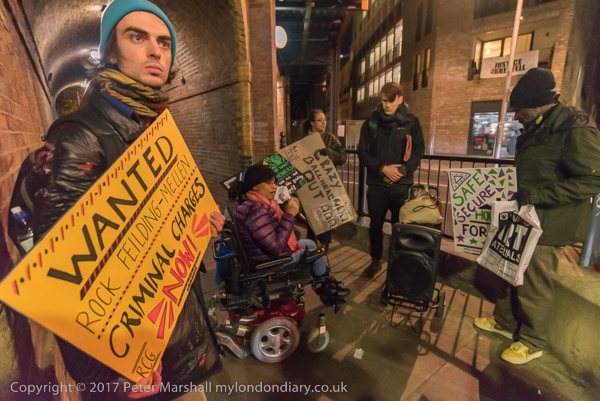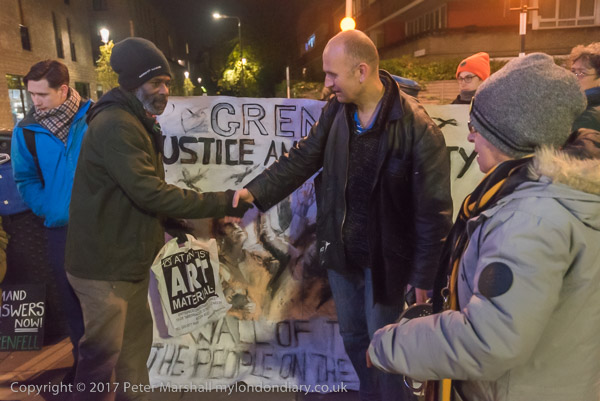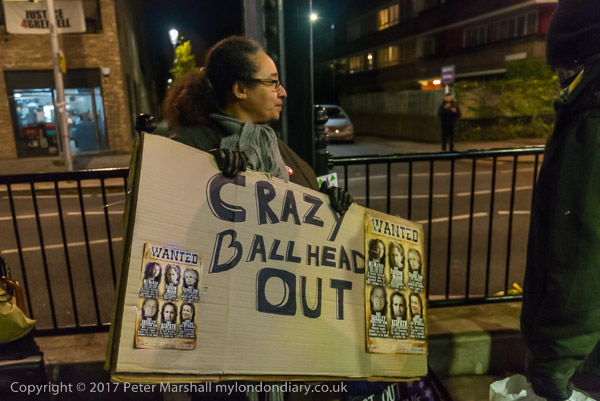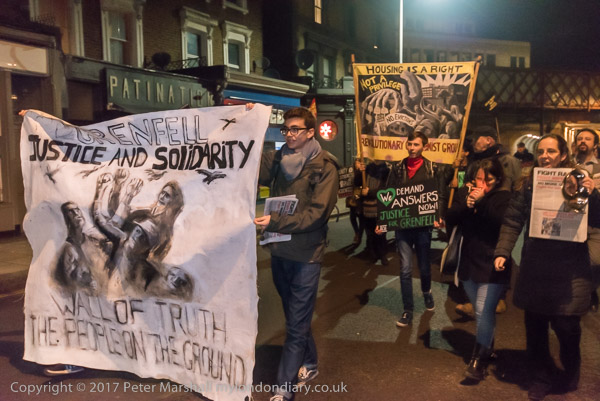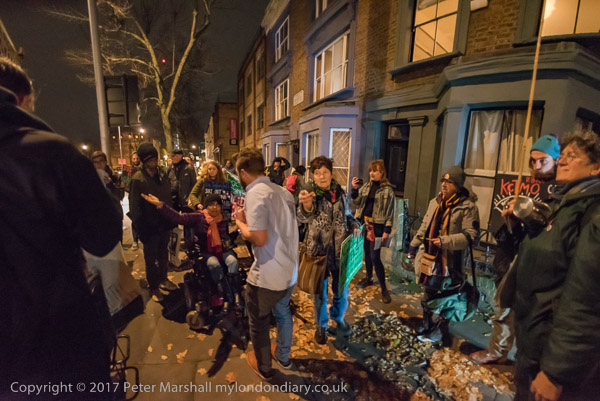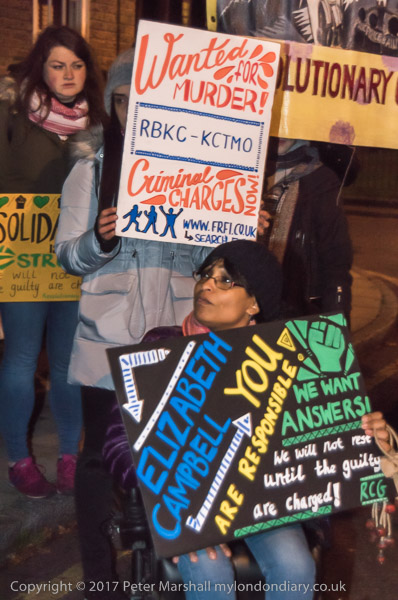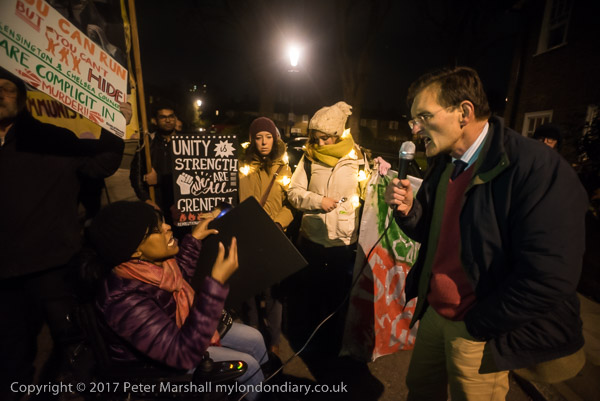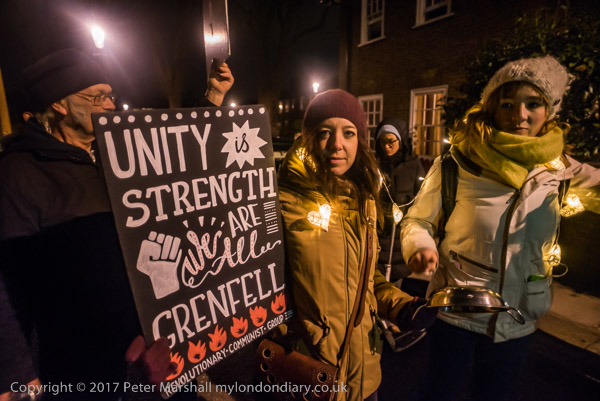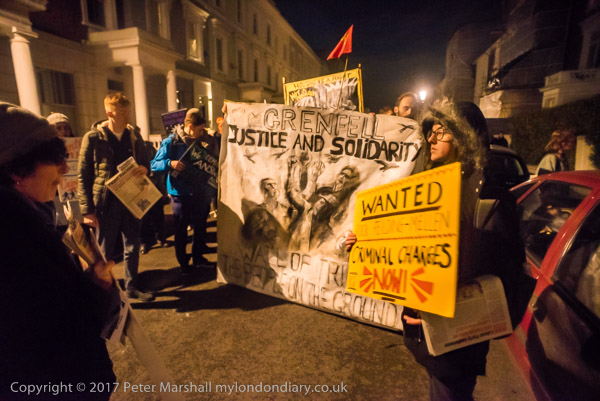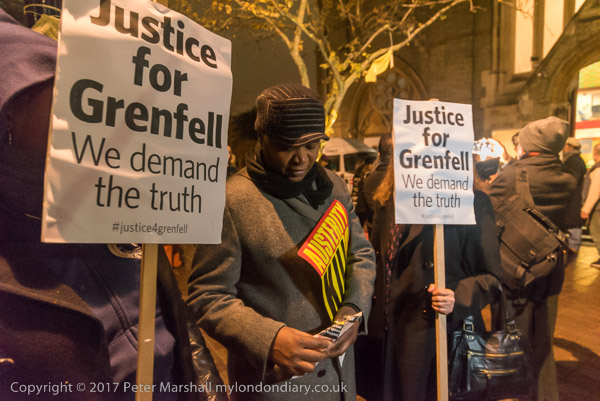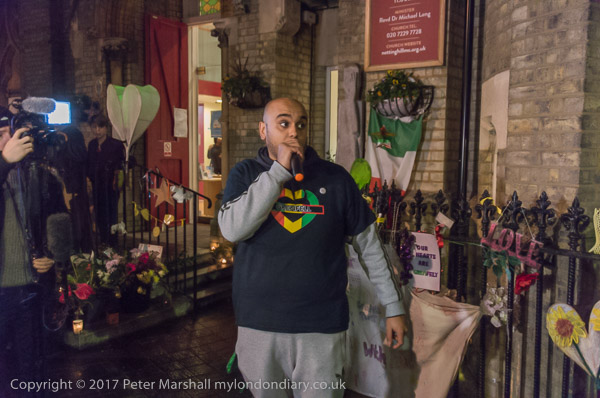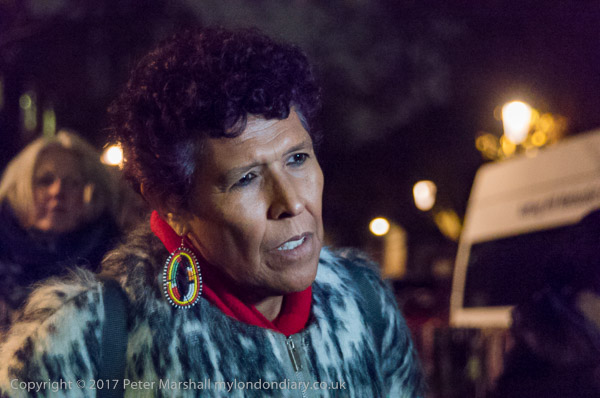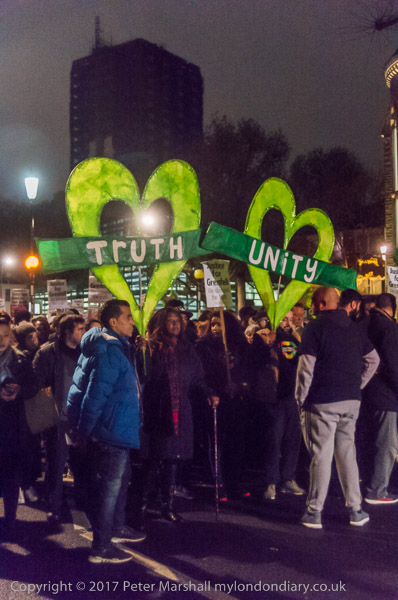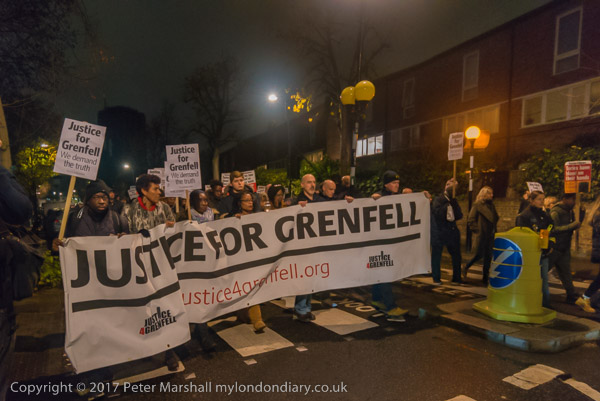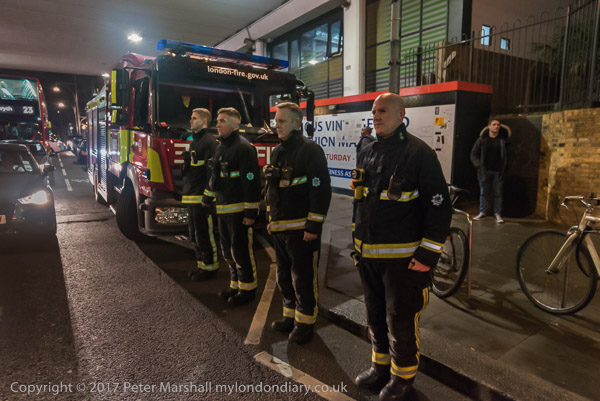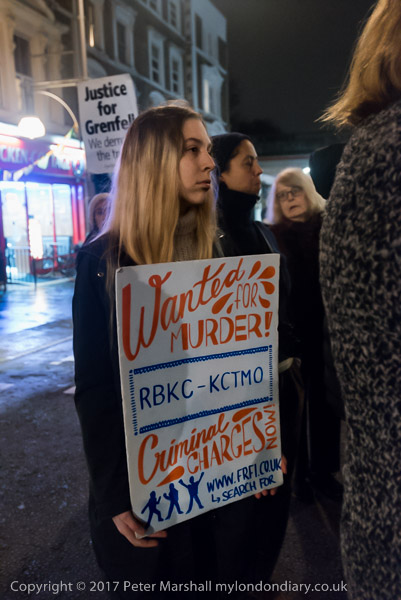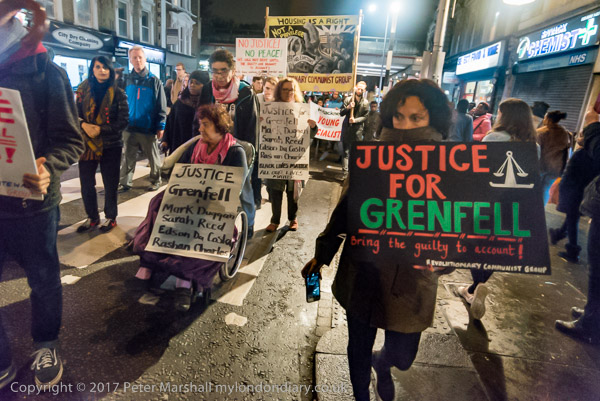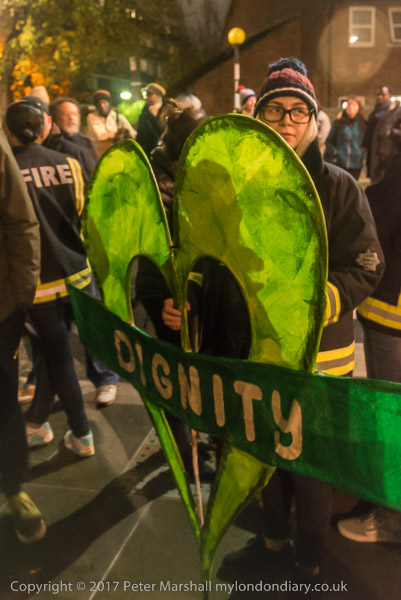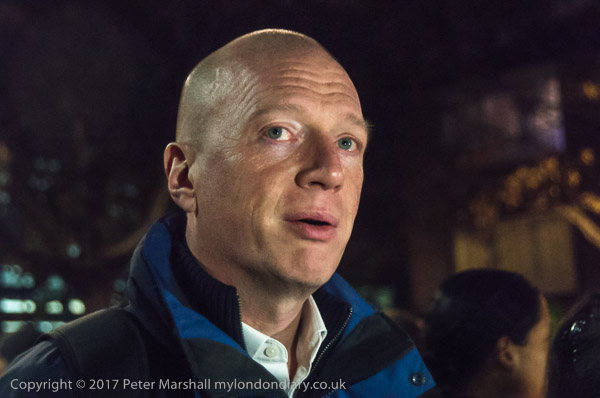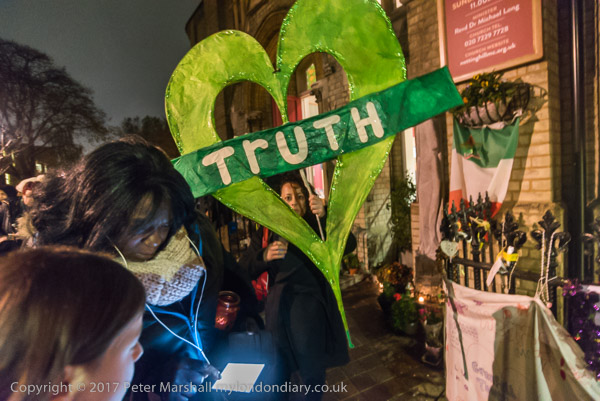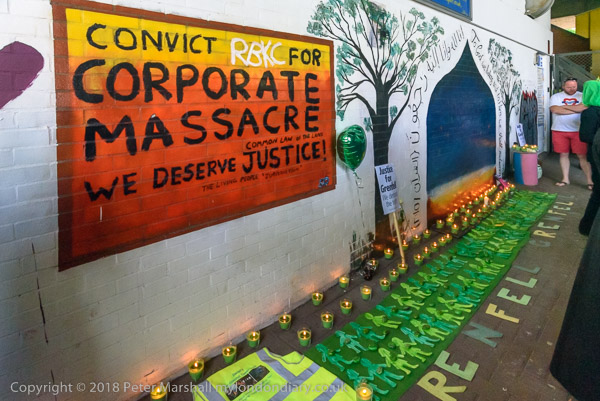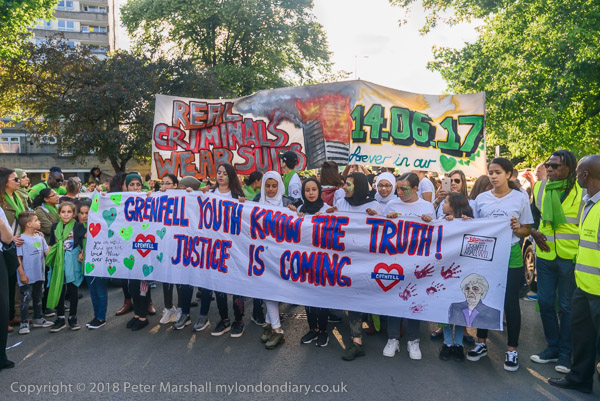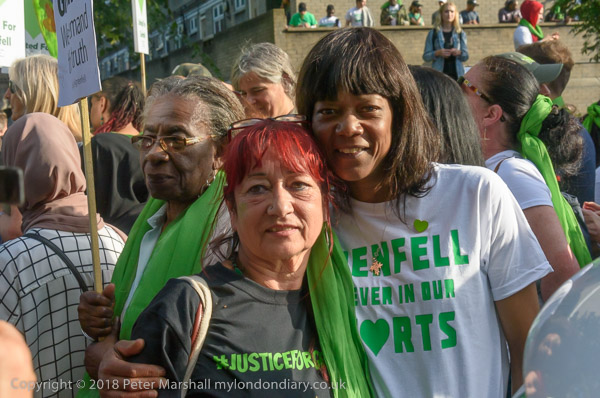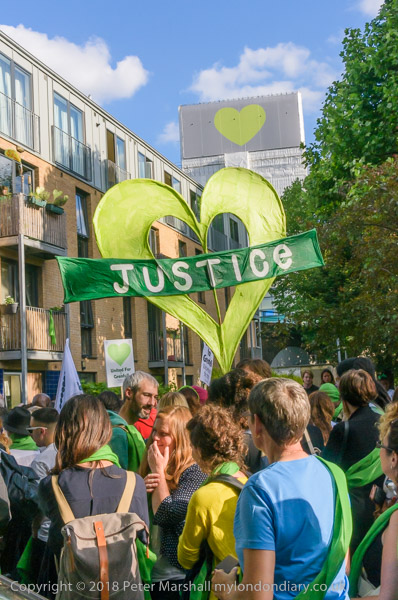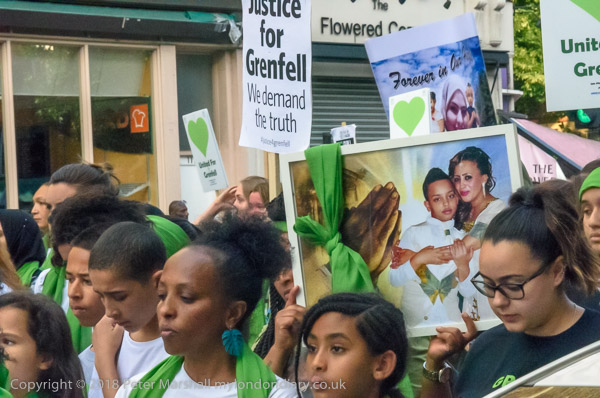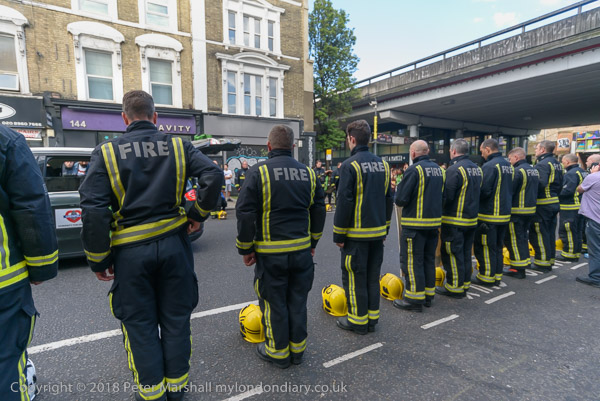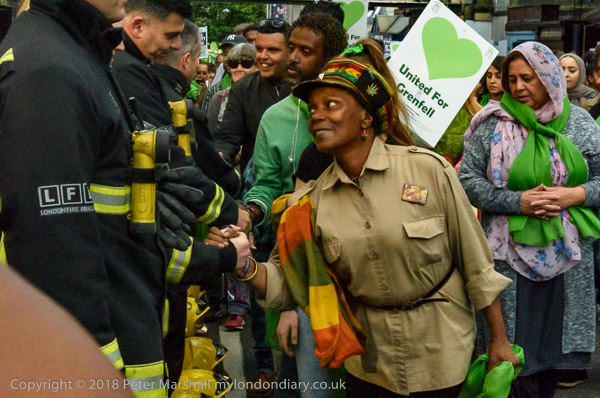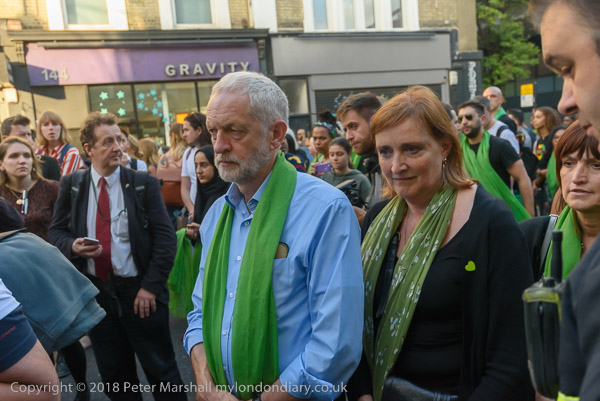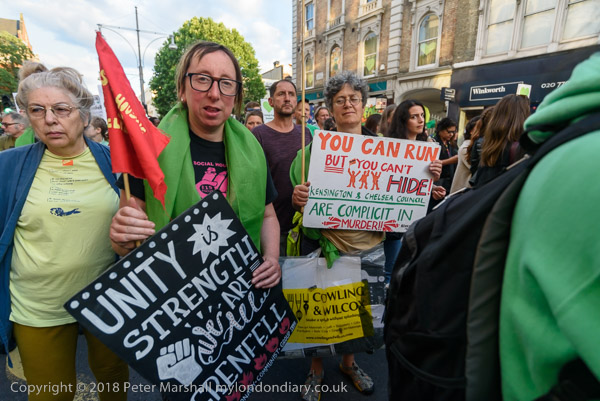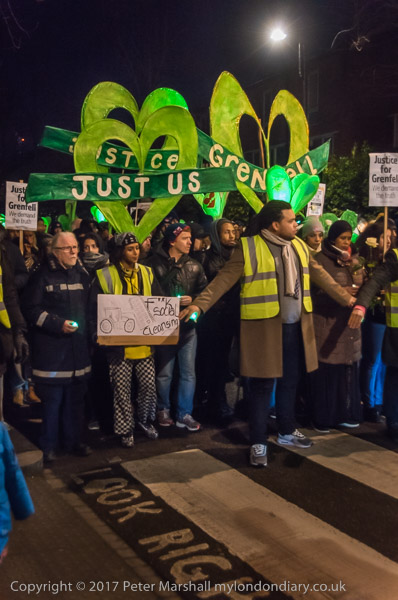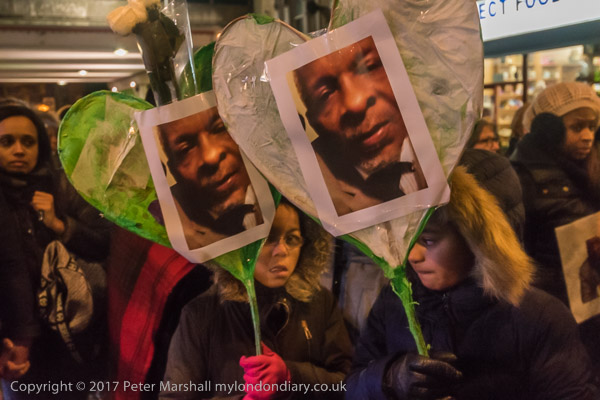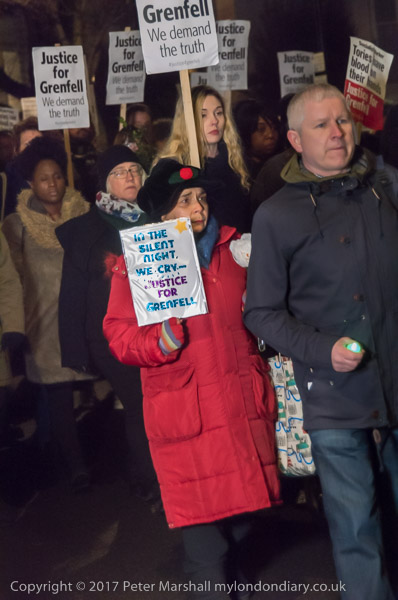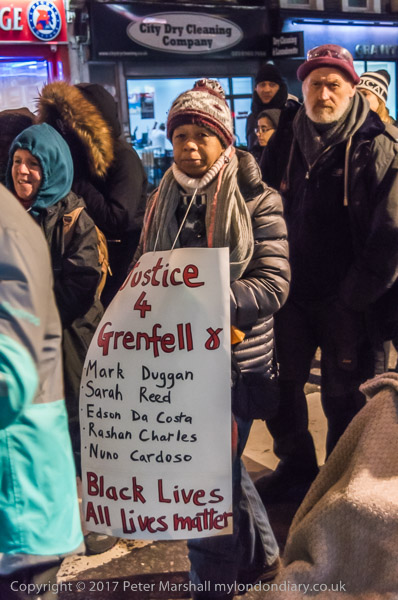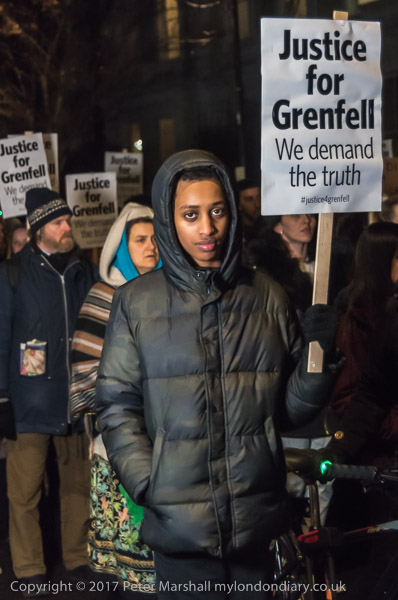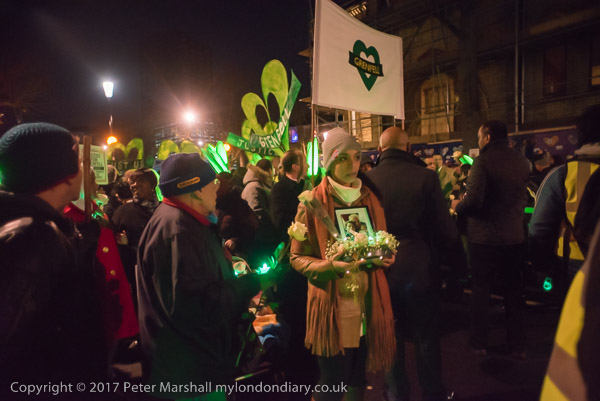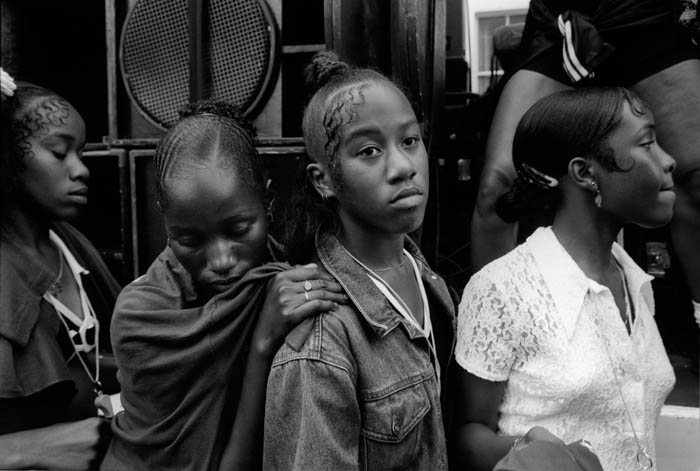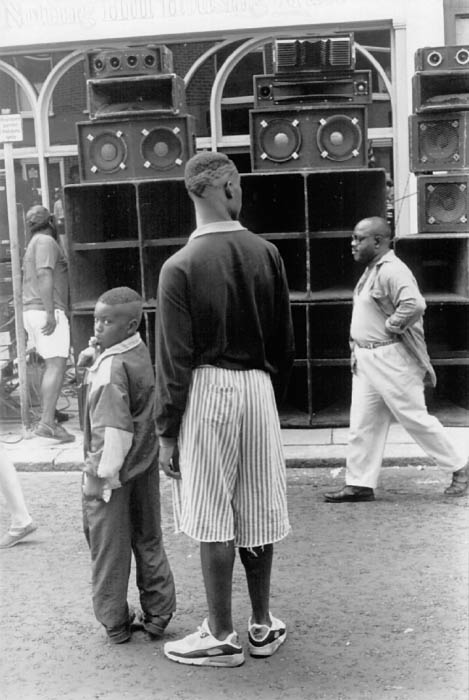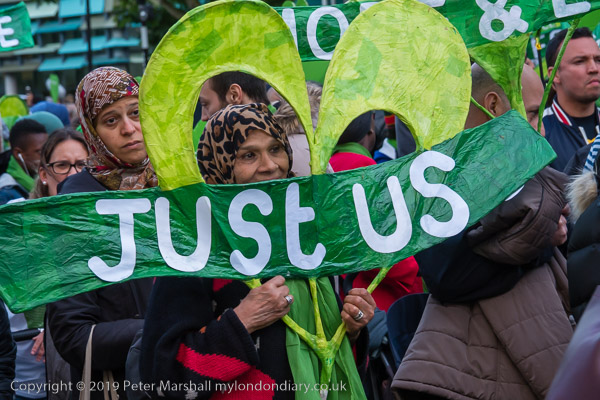Strikes for a Living Wage & Grenfell – Thursday 14th December 2017 was six months on from the tragic fire at Grenfell Tower in North Kensington, and as on every 14th of the month since there was a silent walk to remember the victims and call for justice. But earlier in the evening I photographed two groups of workers striking for a living wage.
Star Wars Strike Picket Picturehouse – Hackney
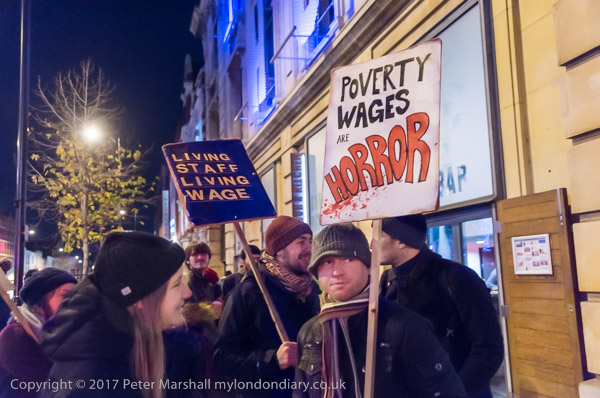
On the day that the ‘Star Wars’ film, ‘Last of the Jedi’ opened at Picturehouse Hackney, workers at the chain held a strike calling for them to be paid the London Living Wage. Workers and supporters demonstrated in solidarity on the pavement outside the cinema as it opened.
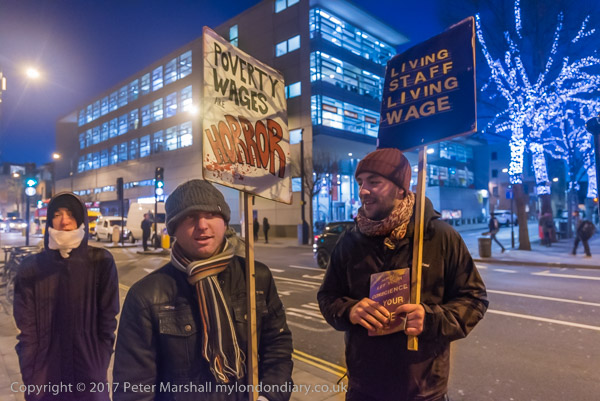
Picturehouse is a part of the multinational company Cineworld and has refused to recognise the trade union which the workers belong to, BECTU, instead claiming they are represented by a company run staff forum. As well as a fight for pay this is also for union recognition.
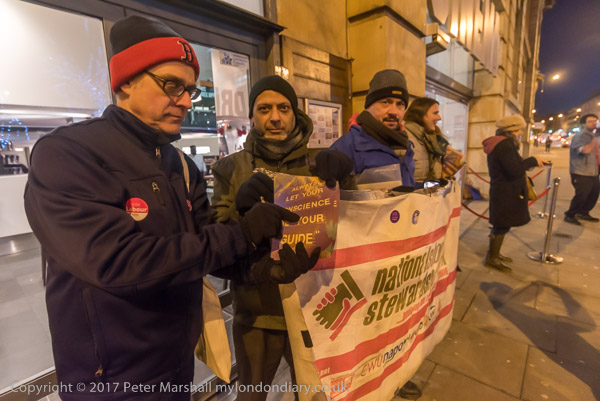
Members voted to dissolve the staff forum in 2019 and is no longer a recognised trade union. Although there have been some pay increases some workers around the start of this year were still only paid £9.80 an hour, over £2 short of the London Living Wage.
Star Wars Strike Picket Picturehouse
City cleaners strike at LHH for Living Wage – Gracechurch St, City
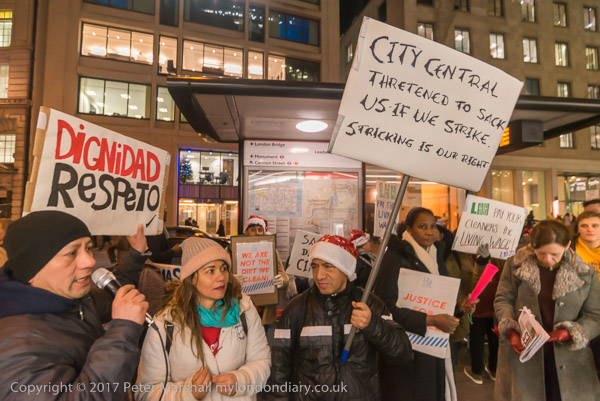
United Voices of the World union and supporters protested noisily outside the offices of Lee Hecht Harrison (LHH), a large company in the heart of London’s financial district with a £2 million profit and a 32% increase in revenue this year.
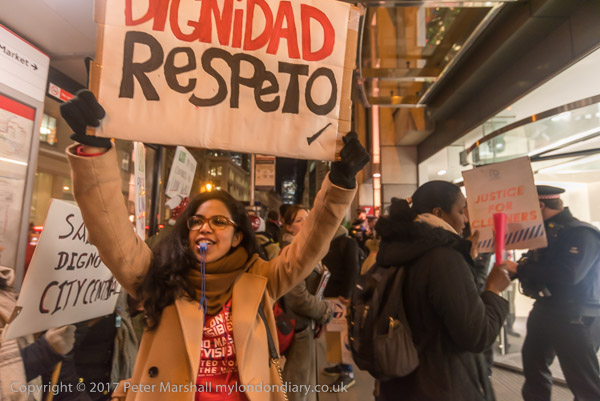
The cleaners of their offices are not employed by LHH and the cleaning was outsourced to City Central Cleaning & Support Services Limited who had rejected their demand for a living wage and unlawfully threatened them with dismissal if they strike.

The cleaners were being paid the national minimum wage of £7.50 an hour, far less than the London Living wage of £10.20 per hour independently assessed as the minimum needed to live on in London.
After an hour of noisy protest by supporters outside the offices the cleaners were cheered as they went in to start their cleaning shift.
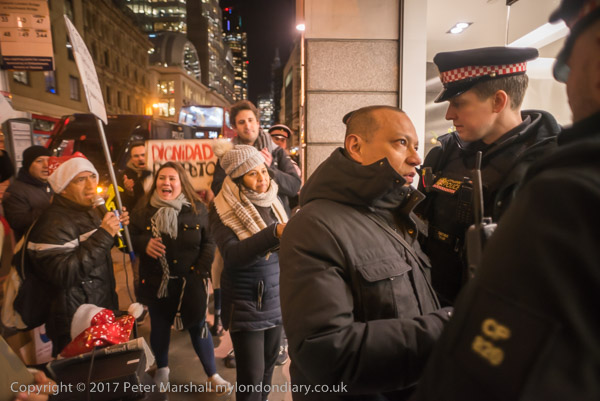
Following this protest, in late January 2018 LHH announced they would be re-tendering their cleaning contract to guarantee that within the month the cleaning staff are paid the London Living Wage of £10.20 per hour. It was the first victory of the year for the UVW.
City cleaners strike at LHH for Living Wage
Grenfell Silent Walk – North Kensington
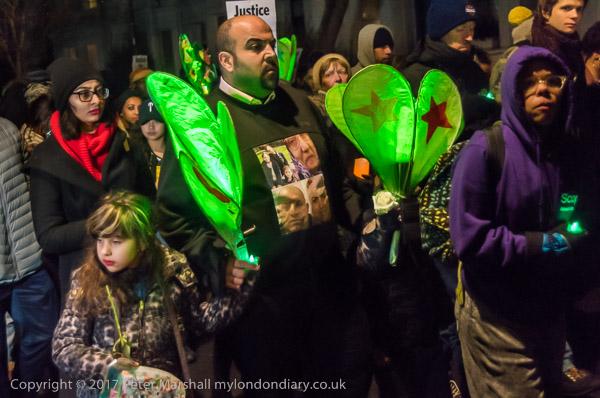
I was late arriving at Notting Hill Methodist and the silent march was starting early, with people already in line behind the banner on the road at the side of the church. It marked 6 months since the terrible fire, and six months in which nothing had been done to prosecute those who were clearly responsible for the conditions that led to the 72 deaths. Six years on nothing has changed.
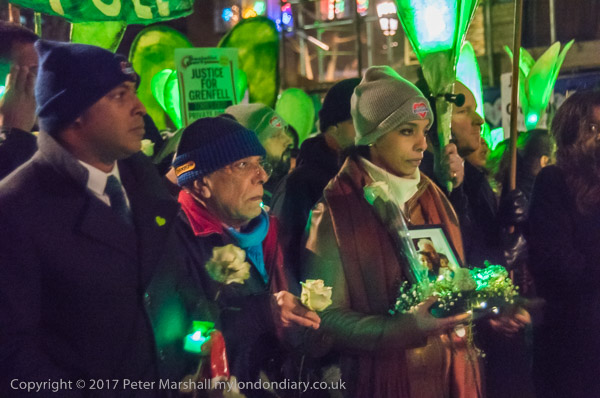
At the front were grieving relatives, some who had escaped from the flames and local clergy, and police and march stewards were ensuring that photographers and others kept a respectful distance.
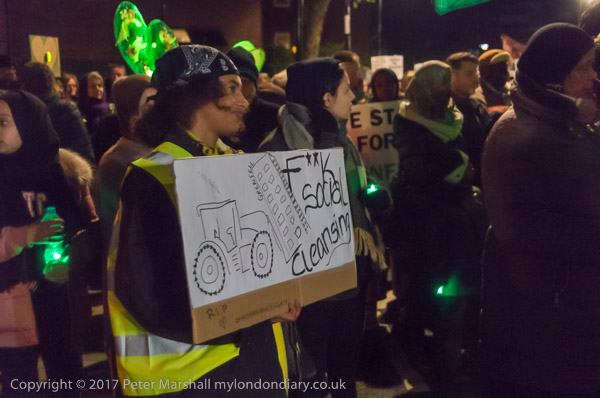
When the march moved off it was led by a line of stewards. Many of the relatives held white roses and photographs of some of those who died and behind them were others carrying large green heart-shapes for Grenfell with single word messages such as ‘JUST US’ , ‘GRENFELL’ and ‘JUSTICE’.
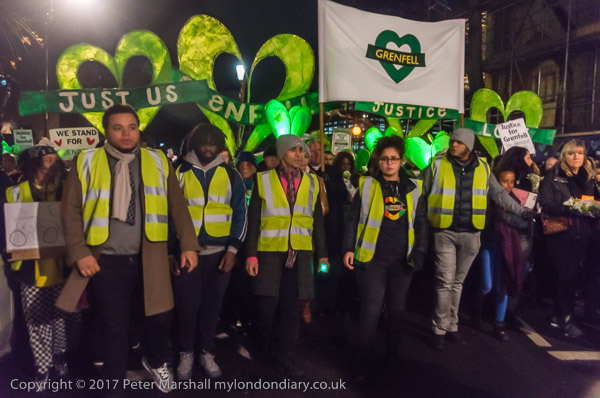
Many taking part walked with green battery-powered candles and further back in the march there were many placards demanding the truth about Grenfell. One banner read ‘Fight For Justice’ and the community will not get it unless they keep on fighting. They have kept on fighting, but it seems less and less likely that the long-running inquiry will deliver any real justice.
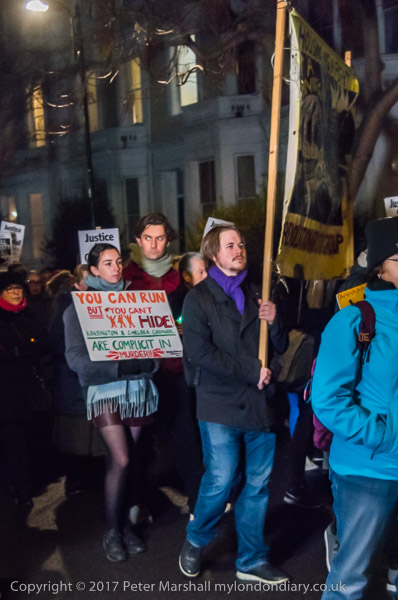
Further back on the march were some more angry posters, including one which read ‘You can run BUT you can’t hide – Kensington & Chelsea Council ARE COMPLICIT IN MURDER’.
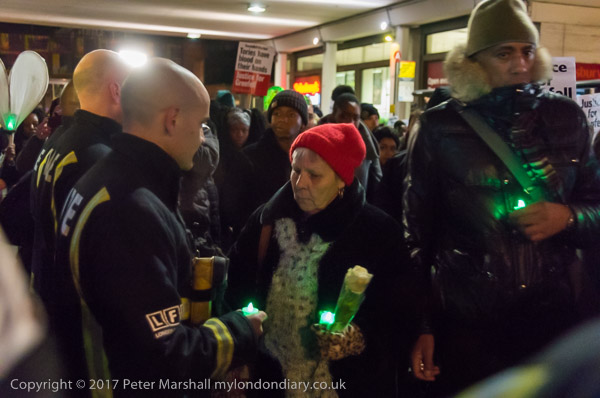
By Ladbroke Grove station firefighters were lined up as a guard of honour for the marchers, many of whom stopped to thank them for their bravery and persistence which saved many lives, some embracing them. I stayed on Ladbroke Grove to photograph as the rest of the march went past.
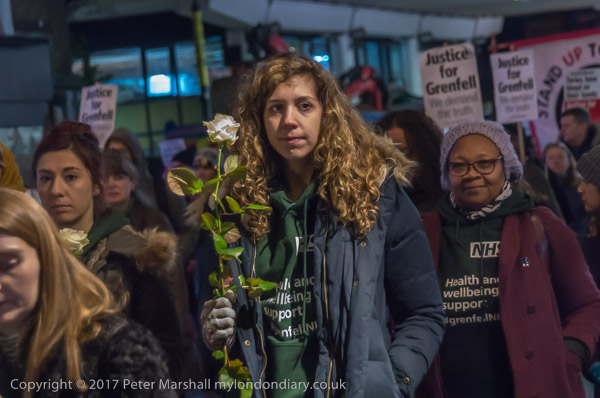
The march seemed much more moving than the service I’d watched on livestream earlier in the day. I was actually here with the several thousand on the march, and close to where the totally avoidable tragedy took place. There are many more pictures from the march on My London Diary at Grenfell Silent Walk – 6 months on.
Flickr – Facebook – My London Diary – Hull Photos – Lea Valley – Paris
